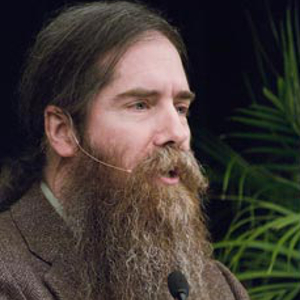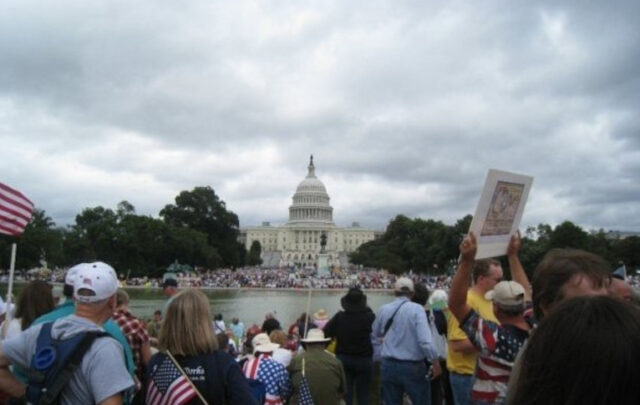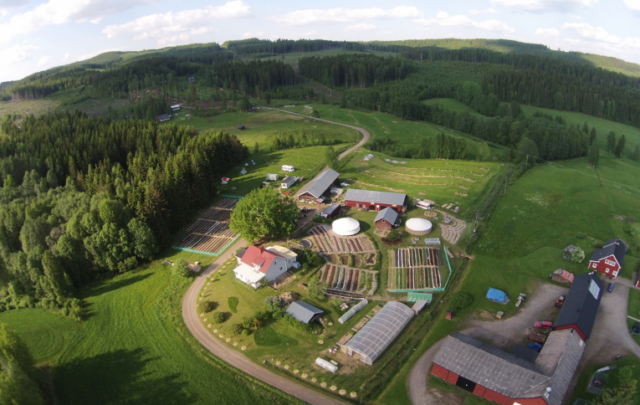It may be prophetic that science fiction, that cracked but not always clouded mirror of our imagined futures, so often makes religion central to narratives about a world after industrial civilization. That fashion was set in a big way by Walter M. Miller’s 1959 bestseller A Canticle for Leibowitz, which leapt past the then-popular genre of nuclear holocaust novels to envision a centuries-long reprise of the Dark Ages, complete with Catholic monks guarding the knowledge of the past. Miller’s book covered a lot of philosophical and theological ground, but among its core themes was the argument that religion — specifically, of course, Catholic Christianity — was the wellspring of humanity’s better possibilities, and would be more important than ever when progress betrayed the hopes of its votaries.
In the hothouse environment of mid-20th century science fiction, a retort from the other side was not long in arriving. It came from Edgar Pangborn, whose award-winning 1965 novel Davy was in large part a counterblast aimed at Miller’s vision. In Pangborn’s future history, the collapse of industrial society was followed by the slow rise of a neomedieval society shackled to superstition and ignorance by the Holy Murcan Church. Like A Canticle for Leibowitz, Davy covered quite a bit of intellectual ground, and Pangborn’s invented Murcan religion was at least as much a scathing satire on the American Protestant religiosity of his own time as it was an attempt to imagine a religion of the future. Central to Pangborn’s vision, though, was the argument that religion was the zenith of human folly, an arrogant claim to privileged knowledge about the unknowable that inevitably lashed out violently against those too sane to accept its pretensions.
Of course these two arguments have been fodder for countless debates since Christianity lost its hold on the collective imagination of the Western world some centuries back,. One feature of the dispute that deserves more attention than it has usually received, though, is the extent to which both sides present the choice between them as the only option there is. Such recent antireligous polemics as Richard Dawkins’ The God Delusion, for example, found their arguments explicitly on the insistence that the kind of religion represented by conservative Christians is the only kind worth debating, just as the equal and opposite polemics from conservative Christians commonly claim that any religion different from theirs is tantamount to Dawkins’ evangelical atheism.
Now this sort of binary thinking, to use the term some branches of the Druid tradition give it, is pervasive in contemporary Western cultures, not least because it’s proven to be immensely profitable for the two mutually dependent sides of a great many such disputes. Behind the quadrennial antics of the mutually interchangeable Demublican and Repocratic politicians in America, to name only one of many examples, lies a canny good cop-bad cop routine, in which each side shakes down an assortment of captive constituencies by bellowing as loud as possible about how terrible a victory by the other side would be. Yet it’s a mistake to assume that a binary of this sort necessarily remains fixed in place forever.
The classical world provides a good example of the way such relationships can unravel. Well before the beginning of the Common Era, the religious landscape of the Greco-Roman world broke open along a line of fracture defined by the gap between an archaic polytheism rooted more in poetry than theology, and a rationalist movement among the political classes that sought individual perfection through moral philosophy. Relations between the two sides were never quite as bitter as the equivalent strains in our own culture; the decision of the Athenian court that condemned Socrates to death for introducing new gods was mirrored in Plato’s insistence that poets would be driven out of his imaginary Republic, but at the same time many Roman intellectuals argued that the religio Romana was justified by its role in maintaining social order.
In classical times, the religious stalemate lasted until a third force – Christianity – entered the picture from outside. One of the foundations of Christian victory was the polemic the two older forces used against one another. Christian apologists could, and did, copy the philosophers in denouncing the gods of Olympus for their dubious morals, then turn around and assail the philosophers for their arrogance and impiety. It wasn’t until the end of the third century CE that philosophers such as Iamblichus and Proclus tried to build a united opposition to Christianity, and by then it was far too late. The classical world was already sliding down the slope of its own catabolic collapse, and the future of the Mediterranean world belonged to the new religious vision exemplified by Christianity and, a little later, Islam as well.
It’s very popular to see this transition as historically inevitable, and to point to features in Christianity that make it “more advanced” than classical Paganism, but this simply rehashes the myth of progress in a different key. Comparative history suggests that things could have turned out differently. In Nara- and Heian-period Japan, for example, a very similar divide between imported Buddhism and indigenous Shinto took a very different course. Japan found its equivalents of Iamblichus and Proclus much earlier, in the persons of Buddhist leaders such as Kobo Daishi and Dengyo Daishi who worked to establish common ground with the older faith, and the resulting accommodation proved to be so durable that a millennium and a half later, most Japanese still practice both faiths.
Despite all the arguments of historical determinists, history does seem to be contingent rather than determined – which is to say, of course, that in human affairs slight causes can have vast effects, and trying to predict the future in advance is a risky proposition at best. This is above all true of religious history, where the vision of a prince, a camel driver, or a tentmaker on the road to Damascus can catch fire in the imaginations of millions and send the world careening down a completely unexpected path. Thus it would be a waste of time to point to one religious movement or another and proclaim it as the necessary wave of the future. A glance at some of the possibilities might be worthwhile, but such a glance must be tempered with the recognition that history seems to take a perverse delight in embarrassing would-be prophets.
For the religion of progress in any of its forms – the straightforward atheist anthropolatry of Richard Dawkins and his peers, or the quasi-theistic versions that use the forms of older faiths but redefine them in progressive terms – the coming of the deindustrial age promises a major crisis of faith. The same is true of today’s Christian fundamentalism, which rejects the progressive vision but has made itself just as vulnerable to a future that shows no particular interest in conforming to its apocalyptic prophecies. My guess, and it’s only a guess, is that despite their current popularity both these faiths are on their way out; too much hostility stands between them to allow the sort of mutual accommodation that happened between Shinto and Buddhism in Japan, and some more recently arrived faiths have already begun to work the same strategy on them that Christianity worked on classical Paganism and Greek philosophy.
Catholicism is another matter. While American Protestantism has been losing members steadily for decades, the Catholic church has been holding steady, not least because so much immigration into the US today comes from predominantly Catholic countries. Demographics have worked very much in Catholicism’s favor, and will very likely continue to do so. Whether the church in America can hold together in the face of the issues pulling it toward schism is a good question, but if it can manage that, A Canticle for Leibowitz may not be as farfetched as it looks.
Buddhism, it seems to me, is also very much worth watching. In the last few decades, especially but not only on the west coast, Buddhism has transformed itself from an exotic foreign import to a homegrown faith with a growing popular appeal, and Buddhist monasteries can be found all over North America these days – there are three of them within a short drive of the town where I live. If it continues along its present growth curve, Buddhism could turn into a major religious force in North America over the next few centuries.
Yet it’s also worth watching the fringes, and keeping an eye out for wild cards. Christianity was a legally proscribed minority faith only a few generations before it seized control of the Roman world. In a world of contingencies, where slight causes can drive vast effects, some religious movement barely large enough to be noticed today might turn into the dominant religion of North America a few centuries down the road. Arnold Toynbee noted in his massive A Study of History that the downslope of civilizations seem to be the incubators of universal religions, and rarely so dramatically as in times when the most basic assumptions of a civilization are visibly disproving themselves. This is such a time, in case you haven’t noticed.
It’s probably wise to mention here that I would be more flabbergasted than anyone else if my own Druid faith were to become any sort of major force in the religious landscape of the future. Born in the 18th century out of a three-way pileup between mystical Anglicanism, fragmentary Celtic traditions, and the first stirrings of what we now call environmental awareness, modern Druidry is distinguished more by its wry sense of humor than by any sort of missionary fervor or mass appeal. Many of us in the contemporary Druid movement are aware of peak oil and the other dimensions of the predicament of industrial society, and are taking action in response, but all things considered, the Church of Elvis probably has a better chance of becoming the universal religion of the future than we do.
Still, whatever religion or combination of religions rises to prominence as industrial society slides down the far side of Hubbert’s peak, the religious dimension will very likely play a massive role in the way today’s society’s adapt to tomorrow’s world of harsh limits and harsher choices. As the aspect of human life that deals with ultimate concerns, religion is among the most potent of all motivating factors, and it seems to me that any serious attempt to make something positive out of the approaching mess will have to draw on religious motivations, in one way or another, if it is to have any chance of meeting the challenges of our future. Thus attempts to imagine the next economy, the next society, or even the next energy system might be well advised to take at least a passing glance in the direction of the next spirituality as well.






